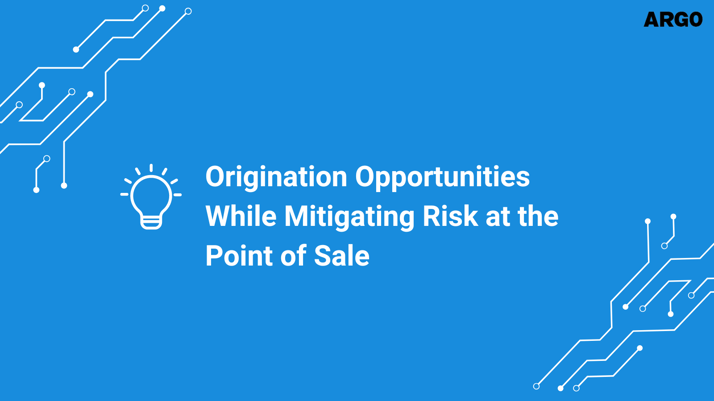Origination Opportunities While Mitigating Risk at the Point of Sale

While financial institutions rely on walk-in and website borrowers, there is additional revenue opportunity at the point of sale. Consumers and businesses are getting their loan needs fulfilled online at the point of sale through buy now pay later offerings, with credit card advances, and through private label third-party financing.
To exploit this opportunity, banks and credit unions must extend their loan acquisition strategies beyond traditional channels to grow and diversify their loan-related income. Point-of-sale lending, done right in a compliant, safe, and sound manner, enables banks to expand their loan portfolios and related income streams, making credit more accessible and inclusive in their communities. Merchants can increase sales and improve their cash flow, and borrowers can purchase needed goods and services. Point-of-sale lending enables banks to deepen and expand relationships with businesses and consumers.
However, there are risks associated with point-of-sale lending. Marketplace lending requires mitigating customer, credit, and compliance risks. To address customer risk, lenders must validate the borrower’s identity, including address, phone number, and TIN, to prevent fraud at the time of application. By automating this validation process, banks and credit unions can alert underwriters to applicants that may require further review prior to fulfillment. From a credit risk perspective, while merchants desire to have financing available for all prospective customers, lenders must price and approve loans with the expectation of a reasonable return. At the point of sale, supporting the entire credit risk spectrum increases opportunity. Establishing non-recourse, recourse, commercial, or a blend of models are options to consider to mitigate credit risk and serve the merchants’ customers across the full range of borrower creditworthiness.
For compliance, lenders must ensure disclosures, rates, fees, and terms meet regulatory requirements. By automating applicant, income, collateral, credit, and compliance analysis along with decisioning, workflow, offer management, and document generation within the framework of the lender’s unique program goals, policies, and regulatory mandates, banks can ensure compliance requirements are met.
